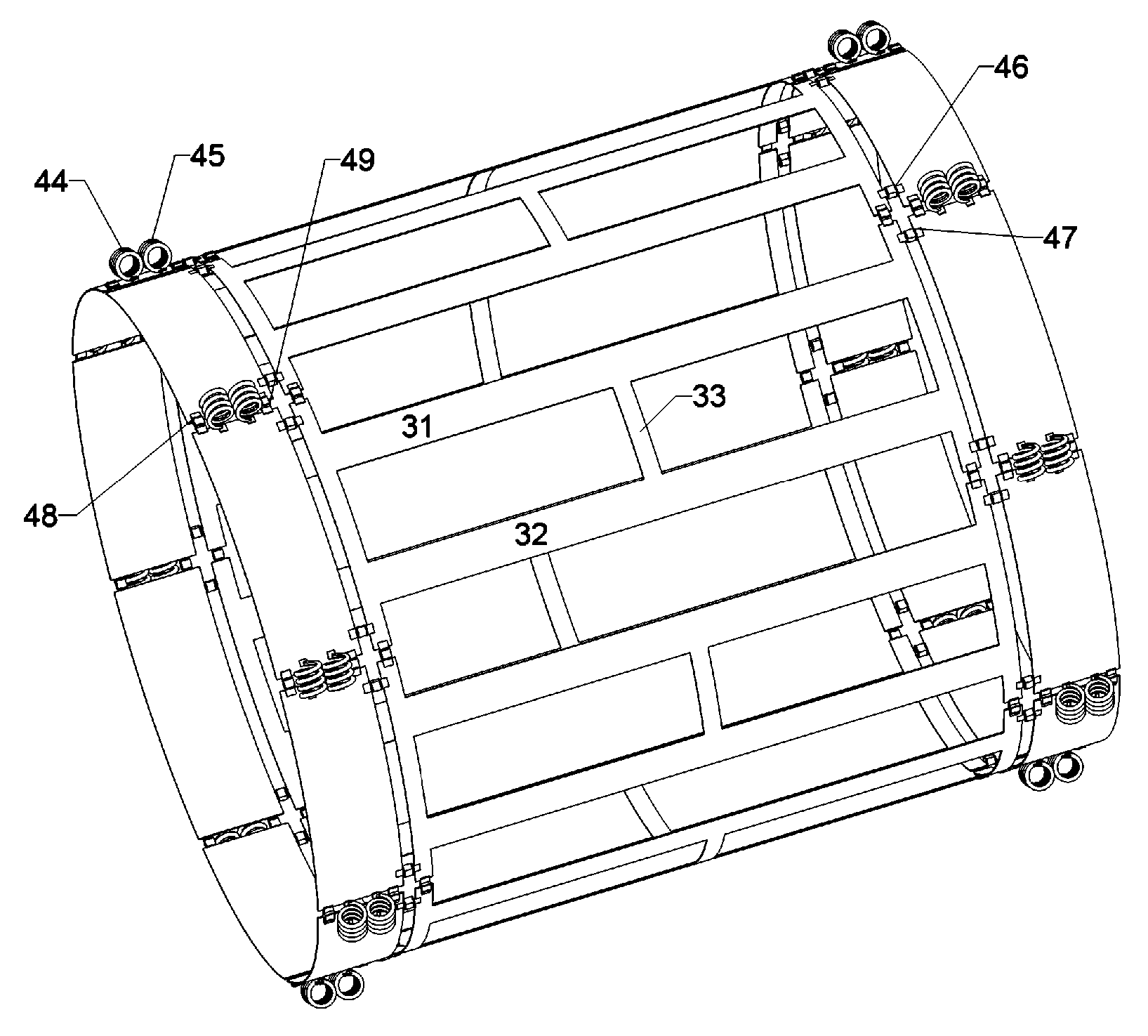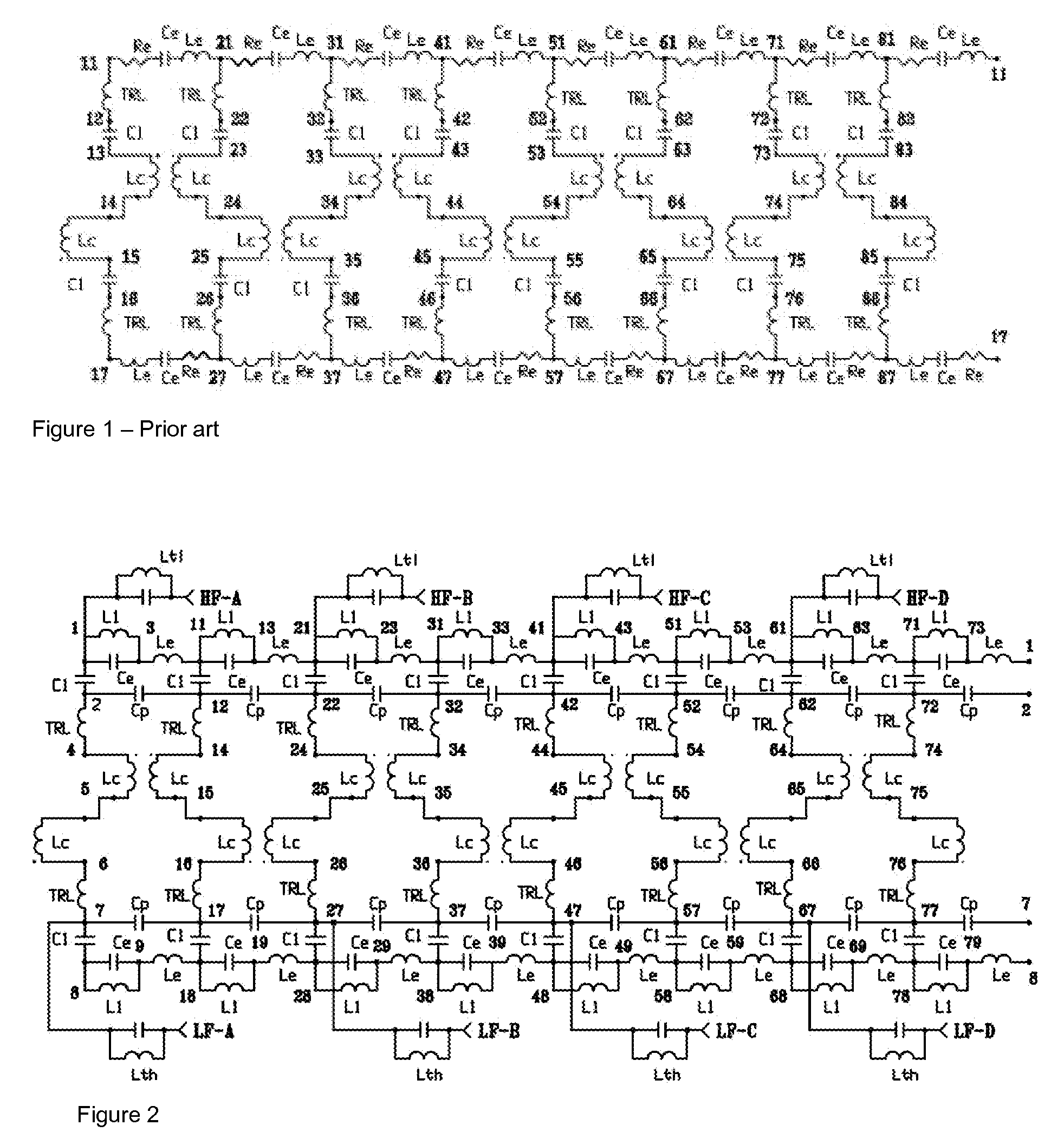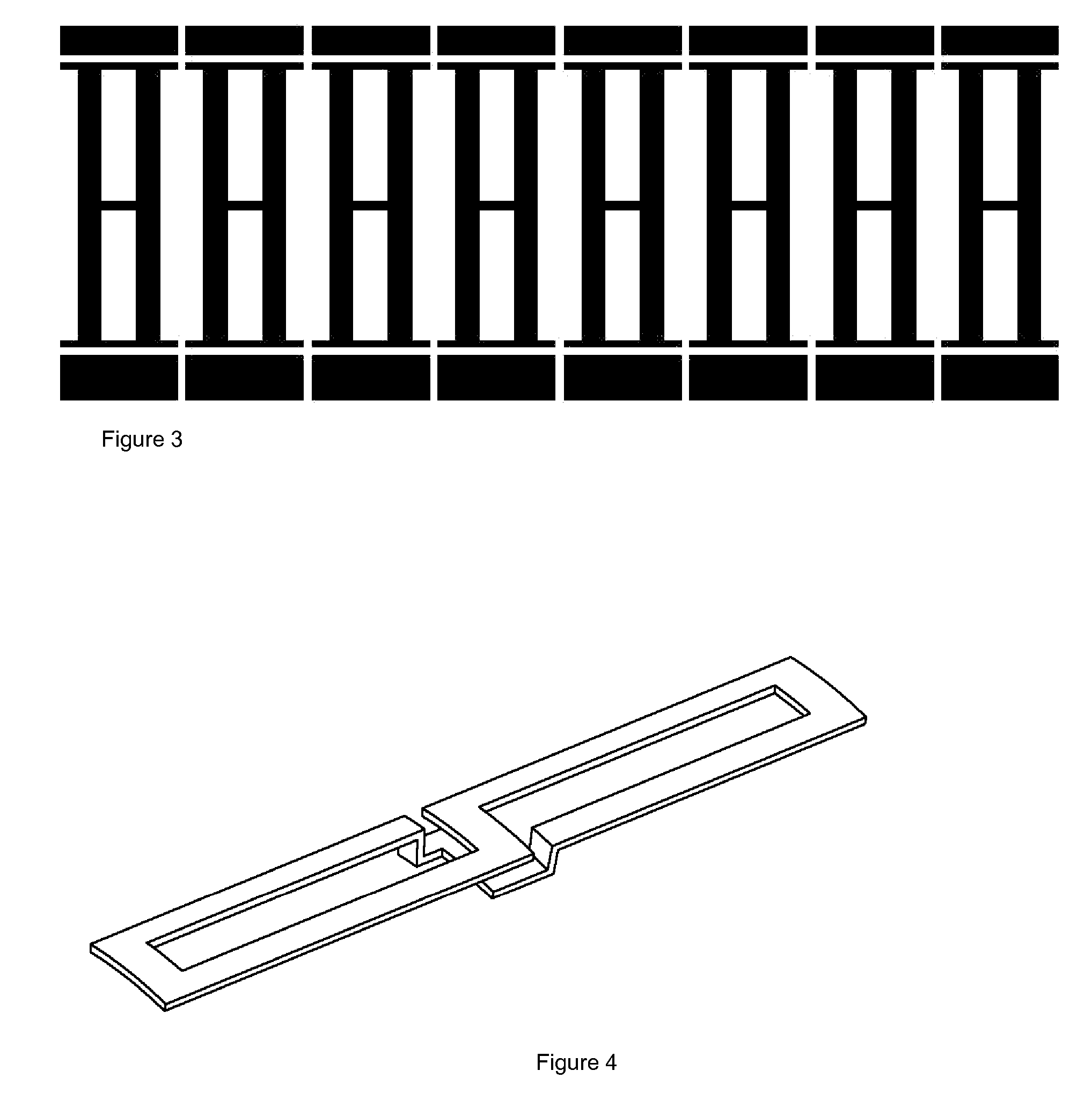Double-balanced double-tuned CP birdcage with similar field profiles
a double-tuned, double-balanced technology, applied in the field of mri rf coils, can solve the problems of sample loss, limited application, limited circuit model accuracy, etc., and achieve the effect of efficient generation of uniform circular polarization (cp)
- Summary
- Abstract
- Description
- Claims
- Application Information
AI Technical Summary
Benefits of technology
Problems solved by technology
Method used
Image
Examples
Embodiment Construction
[0026]FIG. 2 depicts the inventive circuit in which the HF is generated by a balanced HP BC, as preferred for maximum fd, and the LF is generated by the same rung elements operating as a balanced LP BC. These characteristics are essential to insure that coil achieves similar rf magnetic field profiles at the two homogeneous frequencies with the best possible performance at the highest fd products.
[0027]Operation is understood in general terms most easily by first assuming the capacitors CP are not needed and ignoring the HF traps, LTH, and the LF traps, LTL. A small-value, high-Q inductance L1 is placed in parallel with each ring capacitance CE to form a ring trap with isolated resonance (resonance when disconnected from the rest of the circuit) generally a little below the desired HF frequency fH but at least greater than 0.5 fH. Then, at the LF, the ring trap appears as a small additional inductance in series with LE, and at the HF it appears as a small capacitor. Hence, at the LF...
PUM
 Login to View More
Login to View More Abstract
Description
Claims
Application Information
 Login to View More
Login to View More - R&D
- Intellectual Property
- Life Sciences
- Materials
- Tech Scout
- Unparalleled Data Quality
- Higher Quality Content
- 60% Fewer Hallucinations
Browse by: Latest US Patents, China's latest patents, Technical Efficacy Thesaurus, Application Domain, Technology Topic, Popular Technical Reports.
© 2025 PatSnap. All rights reserved.Legal|Privacy policy|Modern Slavery Act Transparency Statement|Sitemap|About US| Contact US: help@patsnap.com



